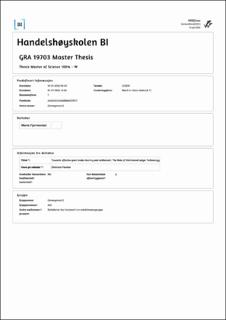| dc.description.abstract | The use of blockchain in finance has caught everyone’s eye in the recent years.
Blockchain is a form of distributed ledger technology (DLT), most famous for being
the underlying technology of Bitcoin and Ethereum. Now that the dust has
somewhat settled around these infamous cryptocurrencies, new use cases for DLT
has started to emerge.
One of them being the use of DLT to increase efficiency in the complex world of
post-trade clearing and settlement of securities. This paper aims to analyze how
DLT can best address the inefficiencies in the industry, as well as determine
challenges, both technological and regulatory, that appear along the way.
DLT is a highly secure digital database that distributes identical ledgers to all
participants in a network. The technology is attractive to the post-trade industry
because it can eliminate the costly and risky reconciliation of databases amongst
intermediaries, enable a flexible settlement cycle, and provide transparency to
ensure regulatory compliance. The use of a private, permissioned and hierarchical
DLT system would allow central authorities to keep their governing role. However,
decentralization of transaction validation could increase efficiency even in a private
environment.
The current system for post-trade clearing and settlement is highly centralized. This
is great from a financial stability perspective, but makes the system less efficient
than it could be. Regulatory challenges tied to DLT are partly addressed in a new
regulation form the EU, which grants exemptions from certain regulatory
requirements. The new regulation also enables the creation of a new role in the
industry, which merges the trading and post-trading processes.
Industry incumbents like central counterparties perform hugely beneficial tasks
such as netting and risk management. If widespread adoption of DLT is to be
achieved, the technology has to prove reliable enough to ensure financial stability,
in addition to bringing efficiency. | en_US |
